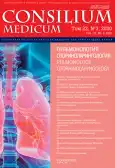Background. Diseases of the respiratory system, in which the etiological factor is Mycoplasma microorganisms, have a number of important features: the nonspecific clinical picture, which often leads to an incorrect diagnosis and, as a result, the inefficiency of prescribed medical measures, the need to conduct highly sensitive research methods taking into account the microbiological characteristics for accurate verification of the infectious agent, as well as the use of antimicrobial drugs with the presence of activity against atypical pathogens. Description of the clinical case. The article presents three clinical cases of extrahospital pneumonia of Mycoplasma etiology from the practice of a pulmonologist: two of them are devoted to extrahospital R-negative pneumonia in children, and the third one reflects a mild course of extrahospital peribronchial pneumonia in adults. There are indications of patient management tactics prior to contacting a pulmonologist. In all three clinical cases, there is a tendency to highlight the main and permanent symptom, which is cough. At the same time, there were no pronounced changes in laboratory and instrumental indicators. From the physical data of the examination, it should be noted that significant changes only affected the auscultative picture. Enzyme-linked immunosorbent assay and polymerase chain reaction methods played an important role in diagnostics. The importance of the role of crowded, organized groups in the spread of the pathogen, in particular the family, is noted. In the treatment, antimicrobial drugs of the macrolide group were used, against which there was an improvement in the dynamics of the patient's condition. Conclusion. Mycoplasma infection of the respiratory system has a poor clinical picture, in which an important place is occupied by cough, and also requires other, not related to routine, methods of diagnosis and treatment. These circumstances determine the need for alertness of specialists in relation to it, the thoroughness of collecting anamnesis and conducting a physical examination, as well as knowledge in the selection of antimicrobial drugs, not only in relation to the treatment of typical pathogens, but also atypical.
 9-11
9-11


 12-20
12-20


 22-27
22-27


 28-33
28-33


 34-39
34-39


 40-45
40-45


 46-54
46-54


 55-60
55-60


 61-64
61-64


 65-69
65-69


 70-73
70-73


 74-79
74-79


 80-86
80-86


 87-93
87-93







